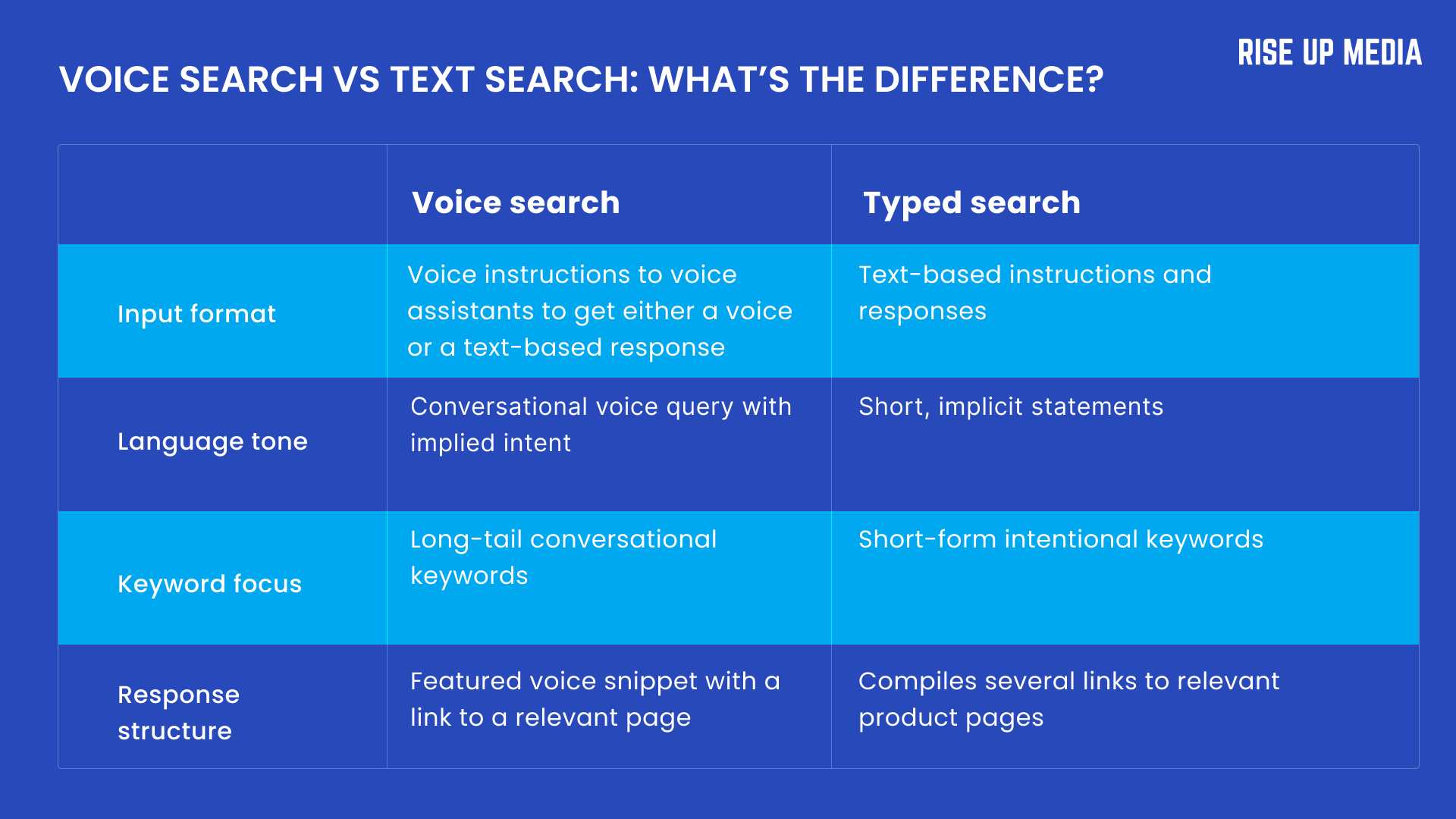A few decades ago, the notion of talking to digital voice assistants seemed like science fiction. Nowadays, if you are looking for the nearest cafe, gas station, or drug store, you’ll have no problem asking Google, Siri, or Alexa for recommendations.
With billions of voice searches occurring monthly, it’s time to optimize your voice search SEO to reach new customers.
So, let’s dive into voice search optimization and learn how to optimize your site for voice search rankings.
What is Voice Search Optimization?
Voice search optimization is all about using SEO techniques to make sure your content gets featured prominently in voice search results. The goal is for your content to be selected and read aloud by virtual voice assistants whenever someone does a voice search.
The most popular voice assistants out there include Apple’s Siri, Amazon’s Alexa, Microsoft’s Cortana, and Google Assistant.
You can use any smart device to conduct voice searches on search engines like Google. However, the results will be displayed in the same format as text-based searches.
Voice Search vs Text Search: What’s the Difference?
How you phrase a query in a voice search differs from a text-based search.
For example, if you are looking for a taco stand in your vicinity, you’re likely to type “taco stands near me” into a search engine.
But for a voice search query, you’ll probably say, “Hey, Alexa, can you find a taco stand nearby?”
When talking to a voice assistant, the tone is usually conversational, the phrase is longer, and the search is crafted as a question or full sentence.
That said, user behavior is a key difference between voice search and traditional text-based search. How you search is largely based on where you are and what you’re looking for, as we can see in the comparison table below.

Why Should You Optimize for Voice Search?
According to research, over 50% of all searches on the internet are voice-based, and this number is expected to go up as more people buy smart speakers and use voice assistants on their phones.
Consumers increasingly use voice assistants for routine tasks like playing music, setting alarms, and finding information.
Voice searches are now also a key driver of online sales. Consumers use smartphones and other smart devices to find businesses and purchase products. If you aren’t optimizing your content for voice search, then you’re missing out on revenue.
Interestingly, e-commerce brands optimizing for voice search experienced a 30% revenue growth in 2024. Therefore, investing in voice search optimization can increase your business’s bottom line.
How to Optimize Your Site for Voice Search SEO: 5 Best Practices

Are you ready to start optimizing your website for voice search? Here are five voice search optimization practices for you to implement.
Research keywords for voice search
Focus on identifying long-tail keywords that are precise queries with lower search volumes. For instance, if the long-tail keyword is “ways to edit a PDF,” you can also have question and conversational keyword variations like “how to edit a PDF” and “how do I edit a PDF.”
Scrutinize search results for keywords you are targeting
Pay close attention to search engine result page (SERP) features to understand what content is relevant for voice search. SERP features are secondary elements on a SERP that bring a new angle to a search result beyond the usual links.
Examples of these features include featured snippets, people also ask, local packs, and rich snippets.
Optimize the content on your site
Before you begin producing new content, run a content gap analysis to identify areas where you can repurpose existing content for voice search. Make sure you look for opportunities to include voice search keywords you’ve come up with.
You can incorporate voice search keywords in your header, body content, and FAQ section.
Enhance your site’s technical SEO
This is the process of optimizing your website to make it more accessible to search engine algorithms. By improving your site’s user experience you position your content better for voice assistants to read it aloud.
To increase your SEO profile, focus on Technical SEO elements such as page speed, mobile SEO, responsive design, and hypertext transfer protocol security (HTTPS).
Continuously review your performance
Monitor the search engine rankings and SERP features for the keywords you aim for. You can use tools like Semrush to monitor the data points and pinpoint opportunities for optimization.
Furthermore, you can analyze your rankings across several locations and types of devices.
Need SEO Optimization Services?
Voice search optimization is an excellent way to enhance lead generation and drive more sales for your business.
However, you need a complete SEO strategy to ensure your site is continuously optimized to enable your business to appear in a wide range of relevant search queries, whether that’s voice search or text-based search.
Contact us today for our help in conducting SEO for your website!




